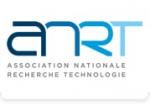Entanglement between thermodynamics and interfacial instabilities in binary fluids close to the critical point
| ABG-134300 | Thesis topic | |
| 2025-11-11 | Other public funding |
- Physics
- Engineering sciences
Topic description
The aim of the present PhD proposition is to experimentally investigate the physics of interfacial instabilities when interfacial tension is vanishing. As such, they will be triggered in near-critical liquid-liquid systems, which present a universal thermodynamic character with physical properties that may diverge or diminish when the critical point is neared. The program will focus primarily on the Rayleigh-Plateau (liquid jet/column instability) and in a second step on the Kelvin-Helmholtz (due to a tangential stress jump) instability, by varying the temperature distance to the critical point from the immiscible phase-separated state to a miscible one.
First, liquid jets will be produced by destabilizing the interface of a near-critical phase-separated liquid mixture using the radiation pressure of a laser wave [1], and the goal is to study the morphology of the jet and the tip-dripping when getting closer and closer to the critical point, where the interfacial tension is vanishing and the flow rate inside the jet due to optical scattering forces [2] proportional to the osmotic compressibility ). As the laser beam power drives the jet length and the liquid flow rate, and as shear at the interface (due to the flow inside the jet) reduces the influence of diverging fluctuations, a flow rate dependence of the drop production is expected to be related to the viscous/fluctuation-dominated transition. When touching the bottom, jets form optically-stabilized columns of very large aspect ratio that destabilize according to the Rayleigh-Plateau mechanism once the laser is turned off [3], which deserves a thorough investigation when interfacial tension vanishes. A “breakup” to “collapse” transition should emerge due to the increasing entanglement between thermodynamics and fluidics.
In a second step, the opposing scattering force densities of a circular and an annular contra-propagating coaxial beams will be set, to look at the possibility to drive optically a Kelvin-Helmholtz instability of very soft liquid columns. Indeed, close to the critical point, the interfacial tension vanishes while concomitantly opposing liquid flows driven by the two contra-propagating beams, diverge due to the divergence of scattering forces at the critical point. The column interface should thus be strongly sheared at very low tension, possibly showing the emergence of a Kelvin-Helmholtz instability triggered by light.
This project will be mainly experimental, but in strong coupling with collaborators working on linear stability analysis (theoretical) and phase field approaches (numerical).
References
[1] Girot, A., Petit, J., Saiseau, R., Guérin, T., Chraibi, H., Delabre, U., & Delville, J. P. (2019). Conical interfaces between two immiscible fluids induced by an optical laser beam. Physical review letters, 122(17), 174501.
[2] Chraibi, H., Petit, J., Wunenburger, R., & Delville, J. P. (2013). Excitation of Fountain and Entrainment Instabilities at the Interface between Two Viscous Fluids Using a Beam of Laser Light. Physical Review Letters, 111(4), 044502.
[3] Petit, J., Rivière, D., Kellay, H., & Delville, J. P. (2012). Break-up dynamics of fluctuating liquid threads. Proceedings of the National Academy of Sciences, 109(45), 18327-18331.
Starting date
Funding category
Funding further details
Presentation of host institution and host laboratory
voir sites web.
PhD title
Country where you obtained your PhD
Institution awarding doctoral degree
Graduate school
Candidate's profile
The candidate is expected to have a good knowledge in physics of fluids and soft matter; background in optics and laser/fluid interaction will be a plus. The candidate is also expected to be curious in theoretical / numerical developments as he will interact with other labs for quantitative comparisons between experiments and models.
Vous avez déjà un compte ?
Nouvel utilisateur ?
Get ABG’s monthly newsletters including news, job offers, grants & fellowships and a selection of relevant events…
Discover our members
 SUEZ
SUEZ  Ifremer
Ifremer  Aérocentre, Pôle d'excellence régional
Aérocentre, Pôle d'excellence régional  PhDOOC
PhDOOC  ANRT
ANRT  CASDEN
CASDEN  ONERA - The French Aerospace Lab
ONERA - The French Aerospace Lab  Institut Sup'biotech de Paris
Institut Sup'biotech de Paris  MabDesign
MabDesign  Tecknowmetrix
Tecknowmetrix  ADEME
ADEME  TotalEnergies
TotalEnergies  Généthon
Généthon  CESI
CESI  ASNR - Autorité de sûreté nucléaire et de radioprotection - Siège
ASNR - Autorité de sûreté nucléaire et de radioprotection - Siège  MabDesign
MabDesign  Nokia Bell Labs France
Nokia Bell Labs France  Laboratoire National de Métrologie et d'Essais - LNE
Laboratoire National de Métrologie et d'Essais - LNE  Groupe AFNOR - Association française de normalisation
Groupe AFNOR - Association française de normalisation



